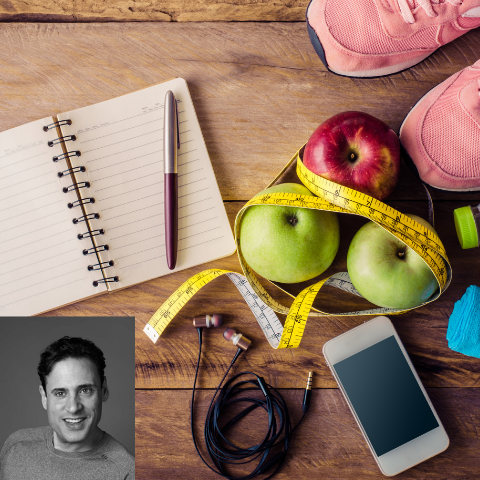May 2021
You’ve heard the saying, “The whole is greater than the sum of its parts.” While Aristotle might not have had fitness in mind when he said this, the sentiment still rings true. Many people struggle with sticking to a workout routine, not because they lack motivation or stamina, but because they neglect the importance of recovery and rest—and ultimately, burn out.
Achieving your fitness goals requires taking a holistic approach. These five tips will help you optimize your workout routine, recover well, and maintain your overall health.
- Choose activities that align with your fitness goals
When it comes to fitness, help yourself stay committed by picking activities that appeal to you and align with your fitness goals. Not a fan of running? Cycling and swimming are great low-impact cardio workouts for building endurance. Weight training is ideal for building strength and power. Looking for something more low-key? Consider yoga—it’s perfect for enhancing flexibility, mobility, and stability.
Remember that your workout doesn’t have to be lengthy to be effective. An eight-minute Tabata-style and a 20-minute HIIT workout are both efficient workouts that you can do when you’re short on time. Free weights (or anything you have at home that can add resistance) can also up the ante. A kettlebell cardio workout, for example, helps increase your heart rate while also building strength.
- Establish a routine
Decide which type of workout works for you, and establish a routine by setting aside days and times to dedicate to your workouts. Try to plan your workouts when you have the most energy during the day (everyone is different) and experience the fewest distractions and obstacles.
As a rule of thumb, healthy adults should aim to exercise five days a week; three days should be cardio-focused, and the other two should incorporate weight training, as well. The U.S. Centers for Disease Control and Prevention (CDC) recommend adults get 150 minutes of moderate-intensity exercise (such as a brisk walk) or 75 minutes of cardio (e.g., running or jogging) at a vigorous-intensity level per week.1
- Stretch
After your workouts, be sure to cool down and stretch for five to 10 minutes. Focus on stretching your major muscle groups, including calves, quadriceps, hamstrings, lower back, and chest. An after-workout stretch allows your heart rate to return to its normal rate.
On recovery or active recovery days, performing a variety of stretches, like ankle and wrist rolls, a hands-over-head stretch, head rolls, and shoulder rolls, improves mobility and flexibility as well as helps relieve the negative effects of inactivity.
- Focus on recovery
Despite your best efforts to cool down and stretch, you may still experience soreness after your workouts. Whether you choose long-distance running or strength training, you’re likely to experience some soreness 24 to 48 hours after a workout.
While soreness, especially joint soreness, can range from mildly uncomfortable to physically prohibitive, there’s support available that can help you get back to feeling your best. BioAstin Astaxanthin—a natural antioxidant found in certain species of plants, animals, and microalgae—can help alleviate joint and muscle soreness as well as support post-workout recovery. *
With this natural supplement, you’ll feel the difference between suffering a couple of days’ worth of soreness and a quick recovery that enables you to get back to your daily routine and workouts—and ultimately, perform better.
- Get sufficient sleep
Finally, prioritize restful and sufficient sleep to round out your holistic approach to fitness. Good sleep enhances cognition, concentration, productivity, problem solving skills, and memory. A good night’s sleep also helps build your body’s defenses against infection and chronic illnesses.
Conversely, continued sleep deprivation raises the risk for many chronic health problems, including obesity, diabetes, high blood pressure, and heart disease. Insufficient sleep can also leave you more vulnerable to mental health issues such as depression and anxiety and irritability, impatience, inability to concentrate, and moodiness.
Too little sleep can also leave you too tired to do the things you want to do, such as sticking to your exercise goals. By making sleep, stretching, and proper recovery part of your regular workout routine, you will continue to reap the benefits of a healthy lifestyle.
“BioAstin is my go-to supplement for my active patients because it provides optimal results that they feel in between workouts, such as decreased joint soreness, decreased fatigue, and enhanced recovery.” - Dr. Silverman
BioAstin is offered in 4mg or convenient one-per-day 12mg soft gels and is available in formulations that combine Hawaiian Astaxanthin and premium ingredients to support specific structures in the body like your eyes and joints. More information about BioAstin can be found here.
*These statements have not been evaluated by the Food and Drug Administration. This product is not intended to diagnose, treat, cure, or prevent any disease.
Dr. Silverman is a member of Nutrex Hawaii's Scientific Advisory Board.
Contact your healthcare provider prior to beginning any new exercise or diet plan.
References:
1 How much physical activity do adults need? Centers for Disease Control and Prevention. https://www.cdc.gov/physicalactivity/basics/adults/index.htm, retrieved Jan 21, 2021

